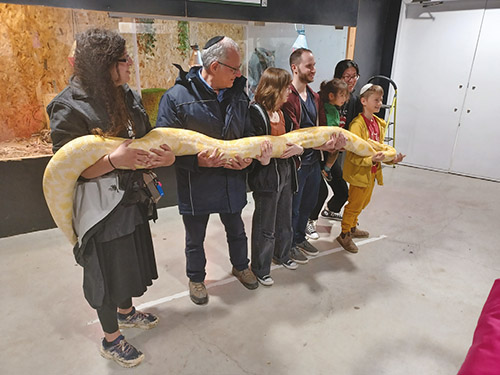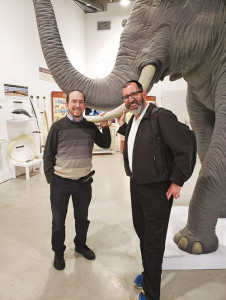
In March, I had the privilege of visiting Israel with my family. With over 200 museums to visit, there’s undoubtedly a museum for every interest. One museum on my bucket list for the future is the Egged History Center in Holon.
On our trip, we visited two museums. The first was the ANU Museum of the Jewish People, formerly known as the Museum of the Jewish Diaspora, in Tel Aviv. ANU is your typical large, well-endowed museum. Meaning the type most high school kids will find utterly dull.
ANU does have interesting exhibits. The recent Codex Sassoon exhibit, which is the earliest and most complete edition of the Hebrew Bible, is an example of an exhibit that one can only see at a museum of this size and budget.

While ANU is interesting, there are only a few compellingly interesting pieces of information there. For a student of Jewish history or someone who has led a Jewish life, many of the exhibits there are somewhat elementary.
Museums often reflect the views of their benefactors. And ANU gives somewhat of a short shrift to the Orthodox segment of the Jewish people. It focuses mainly on Jewish culture, not necessarily the Jewish religion. After venturing through the museum’s three floors, the contribution of Orthodox Judaism is certainly not given in the big picture.
There are several exhibits on different topics, sort of like a set of disconnected dots. But putting all of these together, there is no sense of continuity. And after walking out, it seemed like the exhibits were a series of unconnected stories. The truth be told, trying to tell the entire history of the Jewish people in a single museum is a challenging endeavor.
This is your museum for those who want a deep dive into Jewish culture and need to learn a lot. But for those who have lived a Jewish life, ANU may be a trip down memory lane, but it won’t be the highlight of your trip to Israel. Learn more at https://www.anumuseum.org.il.
While ANU is located in cosmopolitan Tel Aviv, the other museum we visited was the Biblical Museum of Natural History, located in the Beit Shemesh Industrial Zone. Whereas ANU is somewhat religiously apathetic, the Biblical Museum of Natural History, which was founded and directed by Rabbi Dr. Natan Slifkin, is just the opposite.
For those who read and enjoyed Slifkin’s “The Torah Encyclopedia of the Animal Kingdom,” a good part of the museum is an expansion and explanation of the animals in the Torah.
For those who live in urban areas, their interactions with animals may be limited to dogs, cats and fish. And for those who live in Manhattan, rats. But animals were pervasive and all around for those who dwelled in ancient Israel. For most people, there is a significant detachment to these animals, which is a gap the museum bridges.
When it comes to scripture, animals are everywhere. They are widespread, from the myriad animals in Noach’s ark to the countless animals mentioned in Tehillim. The Gemara spends numerous pages on animals, and the sages there also debated and struggled with animal identification.
One of the things Rabbi Slifkin has worked hard on, and the museum tour guide explains, is that there are many English translations of animals that do not reflect what the animal was in Tanach. From the Biblical yael, which is found in Ein Gedi and elsewhere in Israel, to the shafan and more, the museum is an insightful exploration into the animals of Tanach and the land of Israel.
Like all museums, the Biblical Museum has a gift shop. While it has books and other
items, the adventurous visitor can also purchase a jar of kosher locusts. As to the permissibility of eating them, ask your LOR.
The Biblical Museum of Natural History is one of the most fascinating museums that religious tourists can visit. It’s a mesmerizing learning experience, and perhaps the only museum one can make Birchat HaTorah on before entering. As to that, ask your LOR also.
For those who like hands-on, there are plenty of opportunities to engage with animals here. Several people on our visit were able to hold a massive python named Cuddles. As to the museum employee who named that snake, I have questions for you.
For many, the notion of going to a museum may get a groan. And while this does have “museum” in its name, it is, in fact, closer to an educational zoo. For the religious visitor to Israel, make sure that the Biblical Museum of Natural History is on your bucket list. It”s rare that going to a museum can be a religious experience. And this is one you should take notice of. Learn more at https://www.biblicalnaturalhistory.org.
Ben Rothke lives in New Jersey and works in the information security field. He reviews books on religion, technology and science. @benrothke










